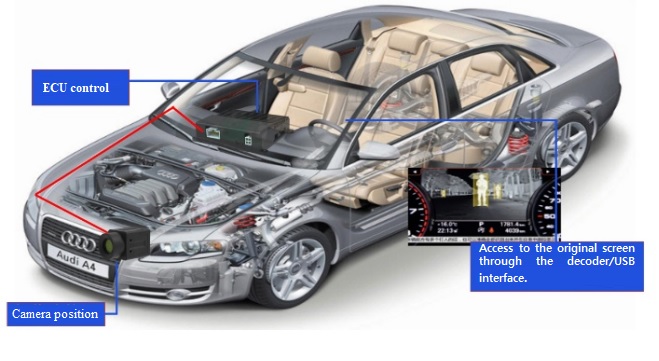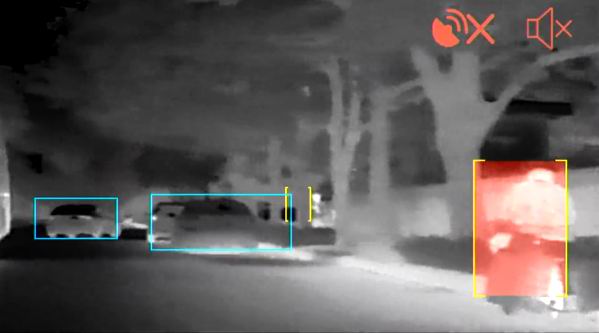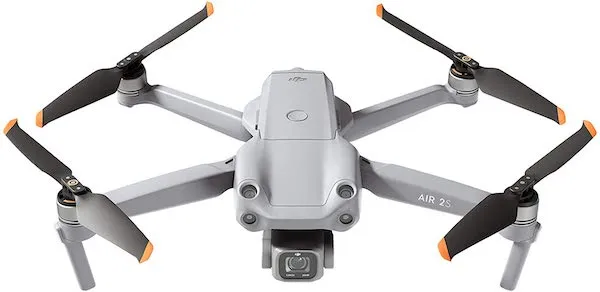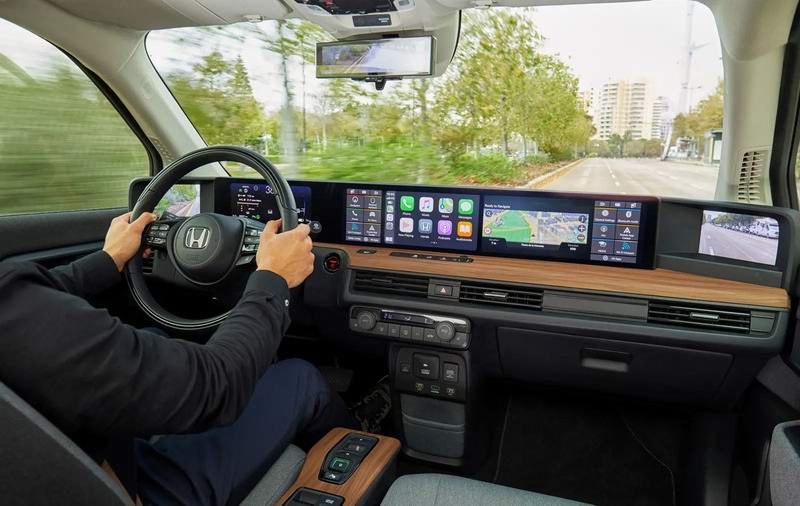Enhance Car Safety with Thermal Cameras


The Benefits of Thermal Cameras in Car Safety
Thermal cameras have revolutionized the field of car safety by providing enhanced detection capabilities in challenging conditions. Traditional vision sensors, such as cameras and radars, often struggle to perform optimally in situations like darkness, sunlight, headlight glare, shadows, and fog. However, thermal cameras excel in these scenarios, making them an invaluable tool for improving car safety.
Improved Detection in Challenging Conditions
One of the key advantages of thermal cameras is their ability to see through various challenging conditions that can hinder visibility. In darkness or low-light situations, where traditional vision sensors may struggle to detect objects accurately, thermal cameras can provide clear images based on heat signatures. This makes them highly effective in detecting pedestrians, bicyclists, large animals, and other vulnerable road users.
Moreover, thermal imaging technology allows for effective visibility through mists, soot, haze, and other challenging environmental conditions. These adverse weather conditions often pose significant challenges to drivers as they impair visibility. However, with the integration of thermal cameras into car safety systems, drivers can have improved awareness of their surroundings even in unfavorable weather.
Enhanced Performance in ADAS and AV Systems
The fusion of thermal imagery with existing vision sensors like cameras and radars can significantly enhance detection and classification algorithms. By combining data from multiple sources, including thermal imaging technology, advanced driver assistance systems (ADAS) and autonomous vehicle (AV) systems can improve their overall performance.
In ADAS applications such as collision avoidance systems or lane departure warning systems, the addition of thermal cameras provides redundancy and enhances the system's ability to detect potential hazards. For example, when a pedestrian is crossing a poorly lit road at night or during adverse weather conditions like heavy rain or foggy environments where visibility is limited for traditional vision sensors alone.
Similarly, in AV systems where vehicles operate autonomously without human intervention or control mechanisms are engaged only when necessary, thermal cameras can play a crucial role. By providing additional data about the environment, thermal cameras can help AV systems make more informed decisions and improve their ability to detect and classify objects accurately.
Improved Driver Comfort and Safety
Thermal imaging technology, when integrated into driver assistance systems, can greatly enhance driver comfort and safety, particularly in challenging lighting and weather conditions. The Night Vision System equipped with a thermal imaging camera is a prime example of how this technology improves drivers' visibility range at night.
With traditional headlights, drivers often have limited visibility beyond the reach of their beams. However, by using a thermal camera that detects far-infrared heat radiation emitted by pedestrians and other vulnerable traffic participants, the Night Vision System extends the driver's awareness beyond what is visible with conventional headlights alone. This allows drivers to react promptly to potential hazards on the road, significantly enhancing both their safety and that of others.
Moreover, thermal imaging technology is not affected by headlight glare or direct sunlight. Glare from oncoming vehicles can be blinding for drivers and impair their ability to see obstacles or pedestrians. However, since thermal cameras rely on heat signatures rather than visible light, they remain unaffected by glare or bright sunlight. This ensures that drivers have a clear view of potential hazards regardless of external lighting conditions.
Installation and Features of Thermal Cameras
Thermal cameras are designed to be easy to install and offer a range of features that enhance car safety. These cameras come in a compact size and include installation accessories or special installation options, making the installation process hassle-free. Let's explore the key features and benefits of thermal cameras in more detail.
Easy Installation and Compatibility
Installing a thermal camera is a straightforward process. The small size of the camera allows for flexible placement options, ensuring it can be easily integrated into different vehicle models. Whether it's mounted on the front grille, rear bumper, or side mirrors, the thermal camera can be positioned strategically for optimal visibility.
Additionally, thermal cameras support CVBS (Composite Video Baseband Signal) and USB synchronous output. This means that they can be connected to various display devices such as an aftermarket monitor or even accessed through the original car screen in some models. This compatibility ensures seamless integration with existing car systems.
Long-Distance Vision and Collision Warning
One of the standout features of thermal cameras is their ability to provide long-distance vision capabilities even in total darkness. Unlike traditional vision sensors that rely on visible light, thermal cameras detect heat signatures emitted by objects. This allows them to detect road conditions up to 300-500 meters ahead, providing drivers with enhanced awareness of potential hazards.
The accurate algorithm used in thermal camera systems enables pedestrian identification from as far as 100 meters away and car identification from up to 160 meters away. This extended detection range enhances overall safety by giving drivers more time to react to fast-approaching pedestrians or vehicles.
Furthermore, thermal camera systems often include collision warning features. These features utilize real-time data from the camera to quickly and accurately alert drivers when there is a risk of collision with pedestrians or other dangerous scenarios. By providing timely warnings, these systems help prevent accidents and improve overall road safety.
Unaffected by Glare and Environmental Conditions
Glare from high beams or direct sunlight can significantly impair a driver's visibility and increase the risk of accidents. However, thermal camera systems are unaffected by glare, making them reliable even in challenging lighting conditions. Whether it's oncoming headlights or bright sunlight, the thermal camera's ability to detect heat signatures remains unaffected.
Moreover, thermal imaging technology allows for effective visibility through various environmental conditions such as mists, soot, haze, and other challenging weather elements. This ensures that drivers have a clear view of the road ahead regardless of these adverse conditions. By eliminating the impact of glare and providing clear visibility in challenging environments, thermal cameras aid in driving safely.
GPS Functionality and Intelligent Pedestrian Detection
Some thermal camera systems come equipped with GPS functionality, providing additional navigation features. The integration of GPS allows drivers to have real-time information about their location and route. This feature enhances overall driving experience and helps drivers navigate unfamiliar roads more confidently.
Furthermore, advanced stabilization technology, sensor technology, image processing technology, and efficient multi-threaded deep learning artificial intelligence recognition algorithms are utilized in assisted driving products with thermal cameras. These technologies enable intelligent pedestrian detection by analyzing the heat signatures captured by the camera. By accurately identifying pedestrians on the road, these systems contribute to improved night driving safety.
The lightless imaging capability of thermal cameras ensures that drivers can see objects even when there is no visible light available. This is particularly beneficial during nighttime driving when traditional vision sensors may struggle due to limited lighting conditions. Additionally, anti-glare capabilities further enhance visibility by minimizing the impact of bright lights on the driver's field of view.
Usage and Maintenance of Thermal Cameras
To ensure optimal performance and longevity, it is important to understand how to properly use and maintain thermal cameras. This section will provide valuable information on temperature range, waterproofing, cleaning and maintenance tips, the impact of ambient temperature on image quality, as well as safety precautions and repair.
Temperature Range and Waterproofing
Thermal cameras are designed to operate within a wide temperature range, typically from -40 to 70 degrees Celsius. This makes them suitable for various climates, whether it's extreme cold or scorching heat. The ability to withstand such temperature extremes ensures that the camera remains functional in diverse environmental conditions.
Additionally, thermal cameras are often built with IP67 waterproofing capabilities. This means they are protected against dust ingress and can be submerged in up to one meter of water for a limited time without sustaining damage. The waterproof feature ensures durability in different weather conditions such as heavy rain or snowfall.
Cleaning and Maintenance Tips
Proper cleaning and maintenance are essential for preserving the performance of thermal cameras. To clean the camera lens, it is advised not to touch it directly with hands as this can damage the transmission film or leave fingerprints. Instead, use a special lens cloth or glasses cloth specifically designed for delicate optics. Gently wipe the lens surface in a circular motion to remove any dirt or smudges.
It is crucial to avoid directing the lens towards intense light sources such as the sun, large lasers, welding machines, or other ultra-strong light sources for an extended period. Prolonged exposure to these sources can potentially damage the optical devices within the camera.
Ambient Temperature and Image Quality
The ambient temperature plays a role in determining the imaging quality of thermal cameras since their functionality relies on detecting surface temperature differences. Different ambient temperatures can affect image contrast and reduce the temperature difference between individuals or objects and their environment.
As ambient temperature increases, there may be a decrease in contrast within thermal imaging videos. This reduction in contrast makes it more challenging to distinguish subtle differences in temperature between objects. It is important to consider this factor when using thermal cameras in environments with high ambient temperatures.
Safety Precautions and Repair
In case of a broken protection window due to excessive external impact, it is recommended to visit a designated repair point promptly. A damaged protection window can compromise the integrity of the camera housing and potentially affect its performance. Seeking professional repair services ensures that any necessary repairs are carried out correctly by trained technicians.
Furthermore, internal components of thermal cameras are designed with features that enable them to function optimally even in low-temperature environments. These components automatically heat up when exposed to low temperatures, helping defrost ice that may accumulate on the camera's surface. This feature ensures proper functionality even during winter months when ice formation is common.
See Also
Improve Safety During Night Driving with Car Thermal Imaging for Land Rover Jaguar
Upgrade Your Driving Safety with a Car Thermal Imaging Night Vision System
Elevate Your Driving Experience with our Car Thermal Imager Night Vision System
Cutting-Edge Features of the Car Thermal Imager for BMW 09-12 CIC SYSTEM
Advanced Features of the Car Thermal Imaging Device for BMW 09-12 CIC SYSTEM
 CN
CN English
English





